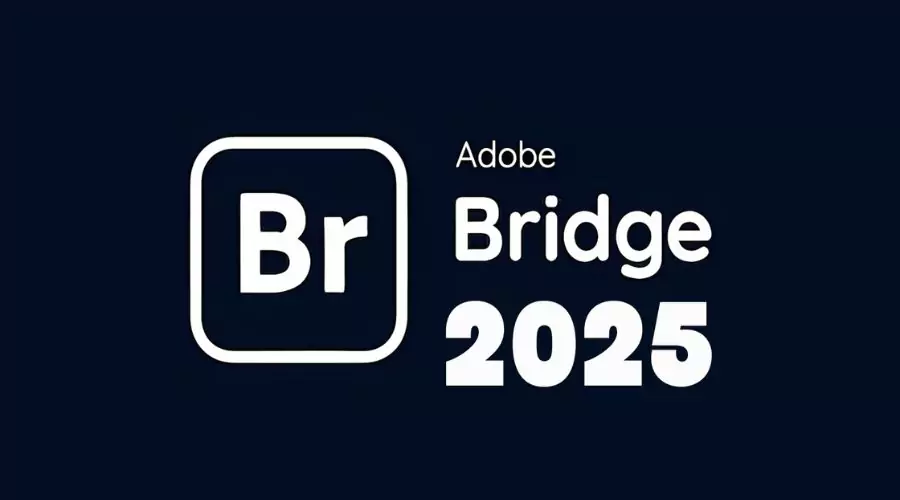Explore the best deals on Marks & Spencer | Limited Period Offer
Explore the best deals on Marks & Spencer | Limited Period Offer
Adobe Bridge 2025 Review: Is It Still The Best Asset Management Tool?
Adobe Bridge 2025 stands as one of the most robust digital asset management tools, tailored for creatives who need a fast, centralized way to browse, organize, and manage large volumes of files. Whether working with photography, design, or video, it provides the structure to streamline file handling across Adobe Creative Cloud apps. From tagging and rating to batch renaming and metadata editing, Bridge 2025 improves efficiency for any creative workflow. As the best photo manager, it also enhances the way photographers handle and organize their images. This in-depth Adobe Bridge 2025 Review dives into its features, advantages, limitations, comparisons with Adobe Lightroom, and its role as a modern file organization powerhouse.

Key Features and Specifications: Adobe Bridge 2025 Review
Adobe Bridge 2025 is built to be the central hub for organizing creative assets. It supports virtually all file types, including raw images, PSDs, videos, audio files, and even fonts, making it a one-stop platform for managing diverse digital libraries. One of its standout features is seamless integration with Photoshop, Illustrator, InDesign, and Premiere Pro, enabling users to drag and drop assets directly into ongoing projects without the need to manually browse folders. The visual interface is intuitive, with customizable panels that let users preview, sort, rate, label, and organize files in a way that suits individual or team preferences.
Bridge’s metadata handling is a major plus, especially for photographers or teams managing thousands of files. Users can apply and edit metadata across multiple files at once, speeding up workflows and improving asset searchability. Bulk processing features like batch renaming, keyword tagging, and format conversions are also accessible in just a few clicks. With native support for Adobe Camera Raw, photographers can also preview and apply non-destructive edits to raw files directly in Bridge. This makes it incredibly useful as a lightweight alternative to other heavier editing tools when quick adjustments are needed before diving into a full edit.
Another important aspect of Bridge 2025 is its upgraded performance and stability. Compared to previous versions, it’s faster, better optimized for modern systems, and more responsive when handling large file sets. If you’ve ever wondered how Adobe file organization can be both smart and scalable, Bridge 2025 answers that with powerful filters, smart collections, and automatic cache management—all designed to handle massive libraries without slowing down.
Advantages and Limitations: Adobe Bridge 2025 Review
Pros
- Excellent file organization with tagging, ratings, and metadata
- Batch processing capabilities save time
- Seamless integration with InDesign, Photoshop, and other Adobe apps
- Supports a wide range of file formats
- Non-destructive previews with Adobe Camera Raw
Cons
- No built-in editing tools like Lightroom
- Lacks cloud-based library like Lightroom CC
- Interface may feel outdated for some users
- No direct mobile app support
- Learning curve for users unfamiliar with metadata and tagging
Benefits: Adobe Bridge 2025 Review
Adobe Bridge 2025 offers immense value for creatives who deal with large amounts of media across different formats. Its biggest benefit lies in its sheer flexibility. Users can customize their entire workspace, filter images using smart collections, and use advanced search tools to locate exactly what’s needed—down to specific metadata entries or color labels. When working on collaborative projects, shared metadata, and consistent file naming conventions help teams stay organized and efficient.
Another core advantage is its ability to batch-process assets with ease. Renaming hundreds of images, applying watermarks, or converting file formats can all be automated with a few clicks. Unlike some asset managers that limit what metadata can be accessed, Bridge gives full visibility and control over every piece of information embedded in a file. This is crucial when working with stock photography, publishing, or archiving. Thanks to its integration with Creative Cloud Libraries, assets managed through Bridge can be synced and reused across multiple Adobe apps, improving consistency and productivity.
Adobe Bridge also supports centralized cache management, letting users control how much space previews take up and when they should be purged. This is a major help when working on systems with limited storage or managing projects across external drives. With its streamlined user interface, powerful batch tools, and top-tier metadata management, Bridge 2025 remains one of the best choices for professional digital asset management.
Target Audience: Adobe Bridge 2025 Review
Adobe Bridge 2025 is geared toward professional photographers, graphic designers, video editors, marketing teams, and anyone who regularly manages large numbers of digital files. It’s especially useful for creatives who work across multiple Adobe apps and need a centralized tool to organize and locate assets efficiently. From advertising agencies handling multiple clients to freelance photographers organizing their shoots, Bridge provides a flexible, powerful solution. It also appeals to educators and archivists who require extensive metadata control, file versioning, and file-type compatibility without being locked into a catalog system.
Conclusion
Adobe Bridge 2025 continues to shine as one of the best digital asset management tools for creatives. With its intuitive interface, powerful batch processing, seamless Adobe integration, and unmatched metadata support, it’s a reliable choice for anyone needing to stay organized across multiple media types. While it may not replace Lightroom for deep photo editing or cloud syncing, it complements it perfectly—especially for professionals who want full control over their file organization. Whether managing high-volume photography, multimedia projects, or extensive design assets, Adobe Bridge 2025 delivers a versatile, scalable, and high-performance solution. This Adobe Bridge 2025 Review proves that it still stands strong as a must-have tool in any creative workflow.
For more information, visit Savewithnerds.



























